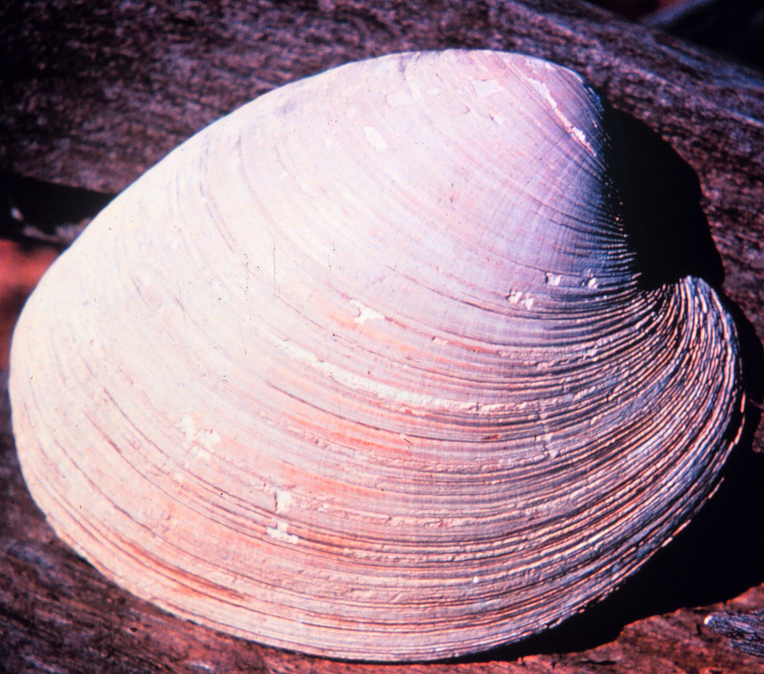North Atlantic Clam That Lives for Centuries Yields Insights on Cardiac Aging

A hard-shell, North Atlantic clam with a centuries-long lifespan is yielding insights on cardiovascular aging that could potentially extend to mammals (including humans). Since age is a major risk factor for heart and blood vessel disease in people—the leading cause of illness and death—investigations in long-lived species may help us to understand more about cardiovascular aging. The research team published their findings from this first study on age-related changes in the hearts of these mollusks in The Journals of Gerontology, Series A, Biological Sciences and Medical Sciences. The study was sponsored by the National Center for Complementary and Integrative Health (formerly NCCAM), the American Heart Association, the National Institute on Aging, and others.
The typical heart in aquatic invertebrate animals such as clams, oysters, and mussels has many strong similarities to the human heart. The Arctica islandica, or ocean quahog, is the longest-living, non-colony-dwelling animal ever identified; so far, the oldest identified specimen survived to age 508 (age is identified by counting shell growth rings).
In this study, the researchers harvested A. islandica specimens from an inlet off Belfast, Northern Ireland. They divided those specimens into four age groups (noting that the oldest one found was 182 years) and, through a cross-sectional study, related their findings to some existing hypotheses about biological aging and cardiovascular aging. In mammals, hypotheses suggest that features of aging include accumulation of proteins that have been modified by oxidation; a decrease in the ability of the body to breakdown and remove proteins damaged by oxidation through the ubiquitin-proteasome system; a decrease in heat shock proteins, which regulate stress resistance and life span; and mitochondrial decay.
Among the study’s findings:
- Oxidative protein damage. The levels of oxidatively damaged proteins in the clams did not increase significantly up to 120 years of age, and then gradually increased.
- Proteasome activity. No significant relationship was seen with age for two of the three types of proteasome activities (trypsin-like and caspase-like), which seemed to indicate that the ubiquitin-proteasome pathway was largely preserved. But for chymotrypsin-like activity there was evidence during early life of a positive association between cardiac muscle protease activity and age.
- Extent of protein ubiquitination. The team found no significant relationship between age and the extent of protein ubiquitination.
- Expression of heat shock proteins (HSPs). Looking at variation with age in the expression of four HSPs, they found significant change in one (HSP90, consisting of a decline in early life).
- Expression of mitochondrial electron transport chain (ETC) complexes. Five ETC complexes were examined; all declined in early life, with no significant reductions later in life.
- These findings, taken together with results of previous studies on extremely long-lived bivalves, add support to the hypothesis that successfully aging species exhibit more efficient cellular stress resistance mechanisms than shorter-living ones and can maintain long-term protein homeostasis and mitochondrial integrity, which may contribute to successful cardiac aging across the phyla. The authors call for further studies investigating cardiovascular aging in animal models of extreme longevity.
Reference
- Sosnowska D, Richardson C, Sonntag WE, et al. A heart that beats for 500 years: age-related changes in cardiac proteasome activity, oxidative protein damage and expression of heat shock proteins, inflammatory factors, and mitochondrial complexes in Arctica islandica, the longest-living noncolonial animal. Journals of Gerontology, Series A, Biological Sciences and Medical Sciences. 2014;69(12):1448–1461.
Additional Resources
Publication Date: December 17, 2014